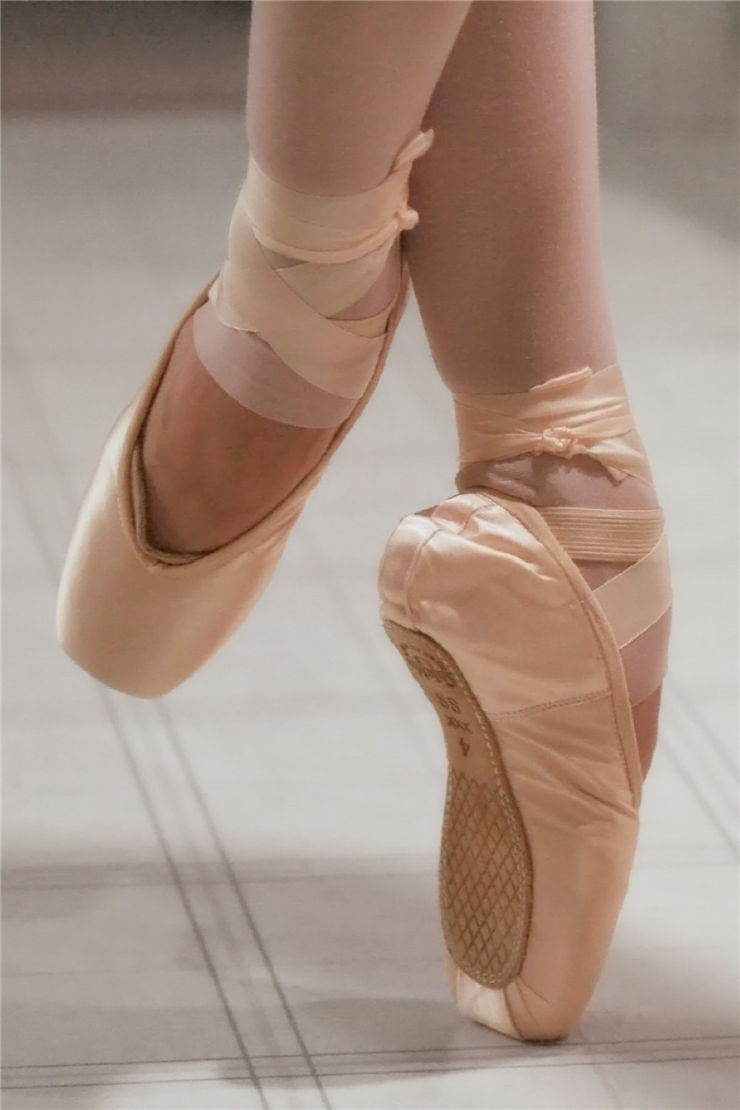Ballet Shoes - History of Ballerina Shoe
Ballet shoes are thin and light shoes, sometimes called ballet slippers. The Ballet shoe has thin soles, so it has maximum flexibility. They are secured with elastic and are closely fitted to the foot, so they have complete safety. Ballet slippers can have one band across the arch of the foot or two criss-cross bands at the top of the foot's arch.
Ballet slippers are made from satin, canvas, or soft leather. Satin ballet shoes wear out quickly and are used for formal performances. Canvas ballet shoes also wear out quickly, but they are less expensive. Leather ballet shoes last a long time.
During practice, ballet dancers wear knitted legwarmers to keep the muscles warm.

During the performance, most of the time, professional ballerinas wear ballet slippers and then change into pointe shoes for the central performance. Most of the ballet dancers wear ballet slippers.
Ballet slippers can be tan colored, like skin, to give a barefoot look. Woman’s ballet shoes are pink colored. Men’s ballet shoes are black or white colored.
Ballet dancers have different feet shapes, toe lengths, and foot arch flexibility, so manufacturers must make other models of ballet shoes or custom ballet shoes.
Foot position and hip rotation were meant to show off the ballet shoes.
At first, before French Revolution, ballet dance was performed in shoes with heels called heeled court shoes. These were delicate and expensive shoes made from quality silk with soft leather soles. Marie Camargo, a member of Paris Opera Ballet, was the first ballerina to wear ballet shoes without the hell. She shortened her ballet skirt to allow a better look at the footwork.
Marie Taglioni had barefoot style and wore soft satin slippers with leather soles.
Charles Didelot created the predecessor of classical pointe shoes. He discarded dance shoes with heels that enabled ballet dancers to leap. They were flat-bottomed, had ribbons to secure the shoe to the feet, and had material under the toes to allow ballet dancers to stand on their toes. But ballet shoes were still without support and structure for feet. They were just satin slippers with leather soles, so ballet dancers had to count just on their strength.
August Bournonville, the Danish choreographer, emphasized male ballet slippers called Bournonville slippers. They were black with a white V-shaped vamp in the front for the impression of the pointed and long foot.
Russian ballerina Ana Pavlova gave extra support to her feet. She had problems with injuries, so she inserted toughened leather soles into shoes and hardened and flattened the toes area, forming a ballet shoe box. These shoes became the predecessor for today's pointe shoes. They gave curved feet, and pointe work became less painful.
Dori shoes combine toe box, heel, and flexible sole allowing steps from classical ballet and other dance styles. They were created by Las Vegas dancer and choreographer Dorimar Bonilla.
The most known dance shoe is the pointe shoe. They are used when ballet dancer performs pointe work. Female ballet dancers usually wear them. En pointe dance is when ballet dancers dance on the tips of their toes. These shoes developed as a need for ballet dancers to dance en pointe for an extended time and as the wish that ballet dancer appears weightless, lightfooted, and graceful while jumping and looks lightweight like defying gravity. Ballet dancers must break into the new ballet pointe shoes to avoid discomfort. The most available color for pointe shoes is light pink.
Elements of ballet pointe shoes are a box, two ribbons, an elastic band, shank, sole, fabric cover, and accessories.
Ballet dancer sometimes wears different pointe shoe models for different performance. Aggressive style requires more stiff pointe shoes, while lyrical style requires softer pointe shoes.
They are made using the turn shoe method where shoes are made inside-out on a last and, before finishing, turned right-side-out. Lasts can be made to replicate a ballerina’s feet.
Pointe shoes will last through ten to twenty hours of wear. Professional ballet dancers will wear it out in one performance. The lifetime of pointe shoes includes many factors like fit, breaking-in, technique, usage, foot strength, weight, and performance surface.
Demi-pointe shoes are very similar to pointe shoes, but they lack complex structure and have no shank, so they are softer. Beginners to pointe technique use them to strengthen feet and ankles.
